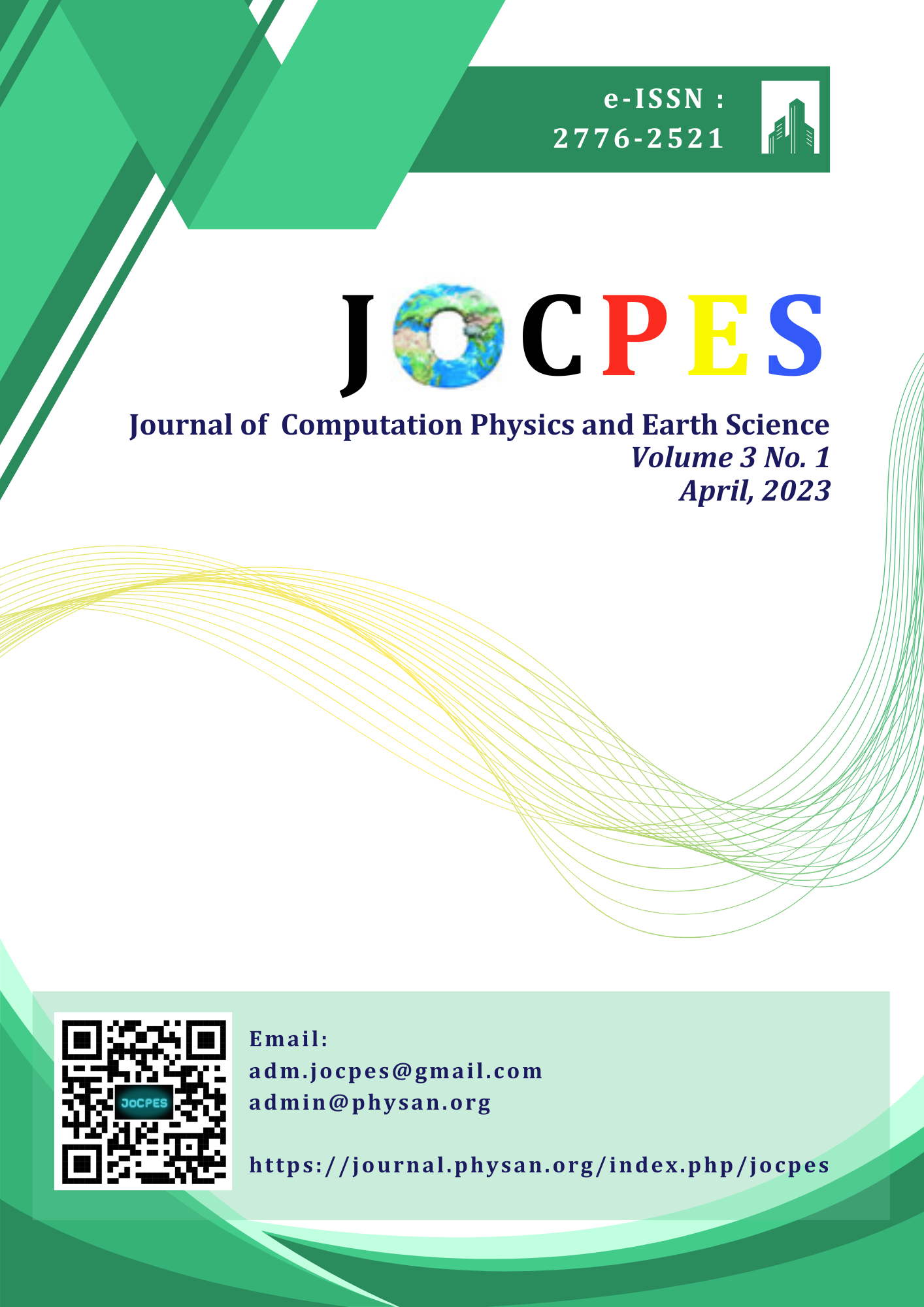Unsupervised Machine Learning for Detecting Seismic Anomalies: Local Outlier Factor Algorithm on Indonesian Ring Fire Data
Main Article Content
Abstract
The Indonesian Ring of Fire, known for its intense seismic and volcanic activity, poses significant challenges for hazard mitigation and risk management. This study applies an unsupervised machine learning approach using the Local Outlier Factor (LOF) algorithm to detect seismic anomalies in historical earthquake data. The LOF method is advantageous for identifying subtle deviations from typical seismic patterns, making it suitable for complex, multidimensional datasets. The research leverages seismic data collected over a multi-year period, focusing on key parameters such as magnitude, depth, and location. Results indicate that the LOF algorithm effectively identifies anomalous seismic events that could signify potential precursors to larger-scale geological occurrences. The findings highlight the potential of unsupervised machine learning techniques in enhancing earthquake monitoring systems, contributing to more proactive disaster preparedness and response strategies in Indonesia’s Ring of Fire. This study provides insights into the integration of machine learning for real-time seismic anomaly detection, offering an advanced tool for researchers and policymakers.
Downloads
References
S. A. Pulinets and K. A. Boyarchuk, Ionospheric Precursors of Earthquakes, Berlin, Heidelberg, New York: Springer, 2004.
V. I. Keilis-Borok and V. G. Kossobokov, "Premonitory activation of earthquake flow, Algorithm M8," Physics of the Earth and Planetary Interiors, vol. 61, pp. 73–83, 1990.
M. A. Mubarak et al., "Earthquake prediction: A global review and local research," Proc. Pakistan Acad. Sci., vol. 46, no. 4, pp. 233–246, 2009. Fadillah and J. G. Achmad, "West Java geothermal update," Proceedings of the 38th Workshop on Geothermal Reservoir Engineering, 2013.
N. A.l., "The behavior of silica in geothermal brine from Dieng geothermal power plant, Indonesia," Geothermics, vol. 54, pp. 109–114, 2015.
K. E. et al., "Gean cooperation on sustainable geothermal energy development in Indonesia - status and perspectives," World Geothermal Congress, Melbourne, Australia, 2015.
M. F. Brown, "Analyzing temperature trends in tropical regions," International Journal of Meteorology, vol. 56, no. 1, pp. 1–10, 2019.
F. D. Williams and R. B. Smith, "Data analysis in climate studies: A methodological approach," Journal of Climate Research, vol. 25, no. 2, pp. 143–155, 2017.
L. T. Allen, "Tropical climate and its effects on human health," Health and Environment Journal, vol. 22, pp. 189–200, 2021.
R. Kumar and S. Kumar, "Monthly air temperature trends in South Asia: A comparative study," Asian Journal of Environmental Sciences, vol. 45, pp. 65–78, 2016.
H. T. Nguyen, "Climate variability and temperature changes in tropical regions," Tropical Meteorology Bulletin, vol. 20, no. 4, pp. 233–250, 2020.
P. N. Lee, "Seasonal patterns of air temperature and their impact on agriculture," Agricultural Meteorology Journal, vol. 30, no. 7, pp. 320–335, 2019.
C. J. White and M. J. Brown, "Rainfall and temperature variability in the Indonesian archipelago," Journal of Tropical Geography, vol. 14, pp. 100–115, 2018.
G. H. Taylor, "Analysis of maximum and minimum temperature trends over decades," Climatic Dynamics Journal, vol. 32, pp. 221–234, 2017.
A. Supriyono et al., "Air temperature variability in Indonesia: Implications for seasonal patterns," Indonesian Journal of Meteorology and Climatology, vol. 12, no. 3, pp. 77–91, 2019.
D. Prasetya, "Seasonal and interannual air temperature variations in Southeast Asia," ASEAN Climate Studies Journal, vol. 27, no. 2, pp. 155–169, 2020.
M. R. Hasan, "Correlation between air temperature and seasonal changes in Indonesia," Asian Journal of Meteorology and Environment, vol. 16, no. 4, pp. 342–356, 2021.

